Thanksgiving
Oxigraf Offices Are Closed November 26, 2020 In Observance of Thanksgiving.

Oxigraf Offices Are Closed November 26, 2020 In Observance of Thanksgiving.

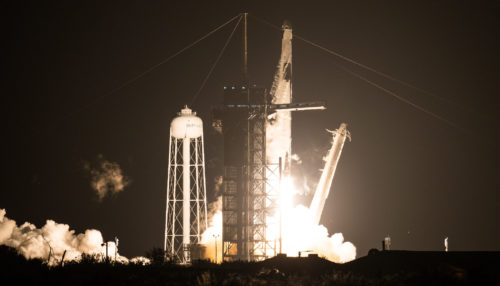
A SpaceX Falcon 9 rocket carrying the company’s Crew Dragon spacecraft is launched on NASA’s SpaceX Crew-1 mission to the International Space Station on Sunday, Nov. 15, 2020, at NASA’s Kennedy Space Center in Florida. Credits: NASA/Joel Kowsky
An international crew of astronauts is en route to the International Space Station following a successful launch on the first NASA-certified commercial human spacecraft system in history. NASA’s SpaceX Crew-1 mission lifted off at 7:27 p.m. EST Sunday from Launch Complex 39A at the agency’s Kennedy Space Center in Florida.
The SpaceX Falcon 9 rocket propelled the Crew Dragon spacecraft with NASA astronauts Michael Hopkins, Victor Glover, and Shannon Walker, along with Soichi Noguchi of the Japan Aerospace Exploration Agency (JAXA), into orbit to begin a six-month science mission aboard the space station.
“NASA is delivering on its commitment to the American people and our international partners to provide safe, reliable, and cost-effective missions to the International Space Station using American private industry,” said NASA Administrator Jim Bridenstine. “This is an important mission for NASA, SpaceX and our partners at JAXA, and we look forward to watching this crew arrive at station to carry on our partnership for all of humanity.”
The Crew Dragon spacecraft, named Resilience, will dock autonomously to the forward port of the station’s Harmony module about 11 p.m. Monday, Nov. 16. NASA Television and the agency’s website are providing ongoing live coverage through docking, hatch opening, and the ceremony to welcome the crew aboard the orbiting laboratory.
“I could not be more proud of the work we’ve done here today,” said Gwynne Shotwell, president and chief operating officer of SpaceX. “Falcon 9 looked great, Dragon was dropped off into a beautiful orbit about 12 minutes into the mission, and we’ll get more data as we go.”
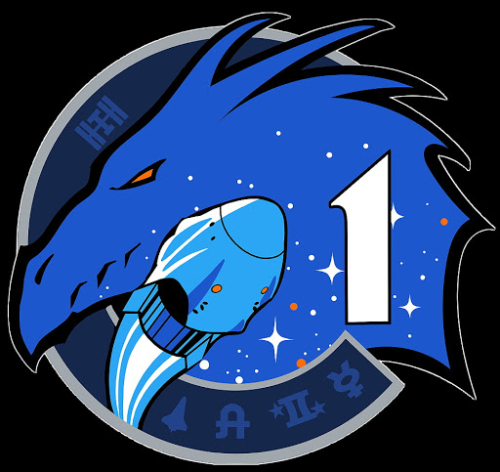
NASA & SpaceX – Dragon Crew-1 Mission patch (Credit: NASA)
The Crew-1 mission is the first of six crewed missions NASA and SpaceX will fly as part of the agency’s Commercial Crew Program. This mission has several firsts, including:
“Watching this mission launch is a special moment for NASA and our SpaceX team,” said Steve Stich, manager of NASA’s Commercial Crew Program. “We are looking forward to getting this crew to station to continue our important work, and I want to thank the teams for the amazing effort to make the next generation of human space transportation possible.”
During flight, SpaceX commands the spacecraft from its mission control center in Hawthorne, California, and NASA teams monitor space station operations throughout the flight from the Mission Control Center at the agency’s Johnson Space Center in Houston.
Hopkins, Glover, Walker, and Noguchi will join the Expedition 64 crew of Commander Sergey Ryzhikov and Flight Engineer Sergey Kud-Sverchkov, both of the Russian space agency Roscosmos, and Flight Engineer Kate Rubins of NASA.
“It is an honor to have our Japanese astronaut launch on this Crew-1 Dragon as the first astronaut of the International Partner participating in the ISS program,” said Hiroshi Sasaki, JAXA vice president. “We look forward to having him conduct lots of science and demonstrate the technology, for here on Earth and for the future. I would also like to thank NASA and SpaceX for their tremendous effort to make this happen.”
Rubins, Hopkins, Glover, Walker, and Noguchi will participate in a live crew news conference from orbit at 9:55 a.m. Thursday, Nov. 19, on NASA TV and the agency’s website.
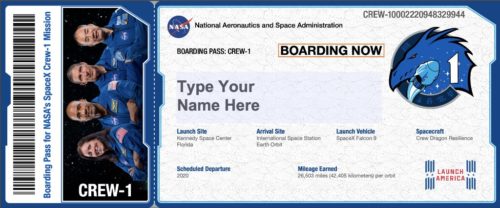
SpaceX’s Crew-1 mission for NASA will fly (from left) astronauts Mike Hopkins, Soichi Noguchi, Shannon Walker, and Victor Glover to orbit aboard a Crew Dragon spaceship. Credit: NASA
Michael Hopkins is commander of the Crew Dragon spacecraft and the Crew-1 mission. Hopkins is responsible for all phases of flight, from launch to re-entry. He also will serve as an Expedition 64 flight engineer aboard the station. Selected as a NASA astronaut in 2009, Hopkins spent 166 days in space as a long-duration crew member of Expeditions 37 and 38 and completed two spacewalks totaling 12 hours and 58 minutes. Born in Lebanon, Missouri, Hopkins grew up on a farm outside Richland, Missouri. He has a bachelor’s degree in aerospace engineering from the University of Illinois, and a master’s degree in aerospace engineering from Stanford University. Before joining NASA, Hopkins was a flight test engineer with the U.S. Air Force. Follow Hopkins on Twitter.
Victor Glover is the pilot of the Crew Dragon spacecraft and second-in-command for the mission. Glover is responsible for spacecraft systems and performance. He also will be a long-duration space station crew member. Selected as an astronaut in 2013, this is his first spaceflight.
The California native holds a Bachelor of Science degree in general engineering from California Polytechnic State University, a Master of Science degree in flight test engineering and a master’s degree military operational art and science from Air University, and a Master of Science degree in systems engineering from Naval Postgraduate School. Glover is a naval aviator and was a test pilot in the F/A‐18 Hornet, Super Hornet, and EA‐18G Growler aircraft. Follow Glover on Twitter and Instagram.
Shannon Walker is a mission specialist for Crew-1. As a mission specialist, she works closely with the commander and pilot to monitor the vehicle during the dynamic launch and re-entry phases of flight. She also is responsible for monitoring timelines, telemetry, and consumables. Once aboard the station, Walker will become a flight engineer for Expedition 64. Selected as a NASA astronaut in 2004, Walker launched to the International Space Station aboard the Russian Soyuz TMA-19 spacecraft as the co-pilot, and spent 161 days aboard the orbiting laboratory. More than 130 microgravity experiments were conducted during her stay in areas such as human research, biology, and materials science. A Houston native, Walker received a Bachelor of Arts degree in physics from Rice University, as well as a Master of Science degree and a doctorate in space physics, both from Rice University, in 1992 and 1993, respectively.
Soichi Noguchi also is a mission specialist for Crew-1, working with the commander and pilot to monitor the vehicle during the dynamic launch and re-entry phases of flight, and keeping watch on timelines, telemetry and consumables. Noguchi also will become a long-duration crew member aboard the space station. He was selected as an astronaut candidate by the National Space Development Agency of Japan (NASDA, currently the Japan Aerospace Exploration Agency) in May 1996. Noguchi is a veteran of two spaceflights. During STS-114 in 2005, Noguchi became the first Japanese astronaut to perform a spacewalk outside the space station. He performed a total of three spacewalks during the mission, accumulating 20 hours and 5 minutes of spacewalking time. He launched aboard a Soyuz spacecraft in 2009, to return to the station as a long-duration crew member. The Crew Dragon will be the third spacecraft Noguchi has flown to the orbiting laboratory. Follow Noguchi on Twitter and Instagram.
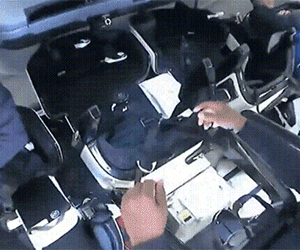
The Crew-1 astronauts’ zero-g indicator, “The Child” (“Baby Yoda”) from the Disney+ Star Wars series “The Mandalorian” floats into pilot Victor Glover’s seat on the SpaceX Crew Dragon. (NASA TV)
The crew will conduct science and maintenance during a six-month stay aboard the orbiting laboratory and will return in spring 2021. It is scheduled to be the longest human space mission launched from the United States. The Crew Dragon spacecraft is capable of staying in orbit for at least 210 days, as a NASA requirement.
Crew Dragon also is delivering more than 500 pounds of cargo, new science hardware and experiments inside, including Food Physiology, a study of the effects of an optimized diet on crew health and, Genes in Space-7, a student-designed experiment that aims to better understand how spaceflight affects brain function, enabling scientists to keep astronauts healthy as they prepare for long-duration missions in low-Earth orbit and beyond.
Among the science and research investigations the crew will support during its six-month mission are a study using chips with tissue that mimics the structure and function of human organs to understand the role of microgravity on human health and diseases and translate those findings to improve human health on Earth, growing radishes in different types of light and soils as part of ongoing efforts to produce food in space, and testing a new system to remove heat from NASA’s next generation spacesuit, the Exploration Extravehicular Mobility Unit (xEMU).
During their stay on the orbiting laboratory, Crew-1 astronauts expect to see a range of uncrewed spacecraft including the next generation of SpaceX cargo Dragon spacecraft, the Northrop Grumman Cygnus, and the Boeing CST-100 Starliner on its uncrewed flight test to the station. They also will conduct a variety of spacewalks and welcome crews of the Russian Soyuz vehicle and the next SpaceX Crew Dragon in 2021.
At the conclusion of the mission, the Crew-1 astronauts will board Crew Dragon, which will then autonomously undock, depart the space station, and re-enter Earth’s atmosphere. Crew Dragon also will return to Earth important and time-sensitive research. NASA and SpaceX are capable of supporting seven splashdown sites located off Florida’s east coast and in the Gulf of Mexico. Upon splashdown, the SpaceX recovery ship will pick up the crew and return to shore.
NASA’s Commercial Crew Program is delivering on its goal of safe, reliable, and cost-effective transportation to and from the International Space Station from the United States through a partnership with American private industry. This partnership is changing the arc of human spaceflight history by opening access to low-Earth orbit and the International Space Station to more people, more science, and more commercial opportunities.
The space station remains the springboard to NASA’s next great leap in space exploration, including future missions to the Moon and, eventually, to Mars. For more than 20 years, humans have lived and worked continuously aboard the International Space Station, advancing scientific knowledge and demonstrating new technologies, making research breakthroughs not possible on Earth. As a global endeavor, 242 people from 19 countries have visited the unique microgravity laboratory that has hosted more than 3,000 research and educational investigations from researchers in 108 countries and areas.
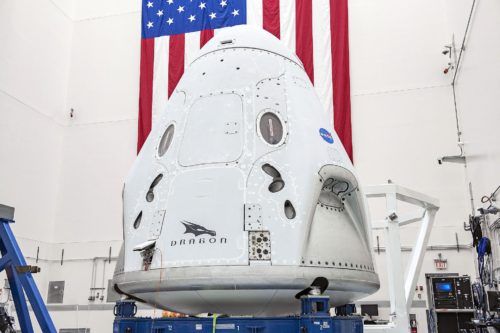
Crew Dragon Resilience (Credit: Wikipedia)
Source: NASA – November 15, 2020; RELEASE 20-114:
Today, on World Lung Day (WLD), the Forum of International Respiratory Societies (FIRS), members and WLD partner organisations unite to advocate for respiratory health globally and call for more research to prevent, detect and treat respiratory infections.
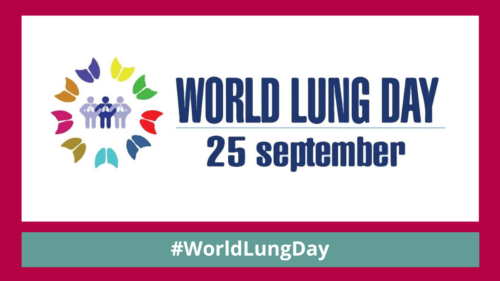
In 2020, the coronavirus (COVID-19) pandemic has made the world aware of how deadly respiratory viruses can be. In reality, respiratory infections have been with us for a very long time and will continue to be a major source of human suffering and death.
Apart from viruses, there are many other sources of respiratory infection that cause much human disease. These include bacteria, fungi and other organisms which may infect the upper airways (nose, sinuses and throat) and/or, more worryingly, the lower airways and lungs (such as bronchitis and or pneumonia). They can cause lung symptoms such as cough, fast breathing, green sputum and breathlessness, as well as general symptoms such as fever, feeling ill and weight loss. Chest pain while breathing or coughing may also occur.
Respiratory infections impose an immense worldwide health burden:
WLD is an annual lung health awareness day, occurring yearly on 25 September. To date nearly 200 organisations and many more individuals support WLD through lung heath advocacy and action. This year, with respiratory health firmly in the spotlight, it is a great opportunity to raise awareness of the burden of respiratory infections and call for:
To learn more about World Lung Day and download the fact sheet, graphics and pledge campaign go to the World Lung Day Toolkit.
Oxigraf Offices Are Closed September 7, 2020 In Observance of Labor Day.
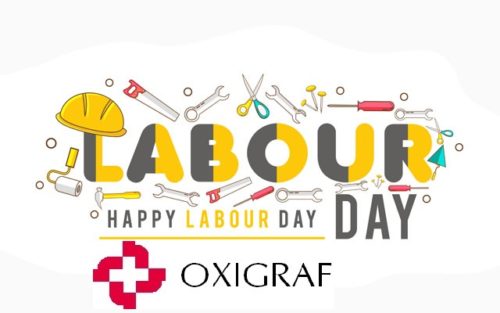
Oxigraf Offices Are Closed July 3 and July 4, 2020 In Observance of Independence Day.
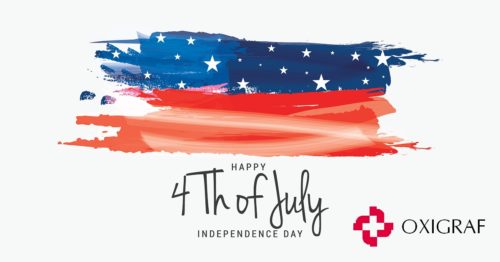
For the first time in history, NASA astronauts have launched from American soil in a commercially built and operated American crew spacecraft on its way to the International Space Station. The SpaceX Crew Dragon spacecraft carrying NASA astronauts Robert Behnken and Douglas Hurley lifted off at 3:22 p.m. EDT Saturday on the company’s Falcon 9 rocket from Launch Complex 39A at NASA’s Kennedy Space Center in Florida.
“Today a new era in human spaceflight begins as we once again launched American astronauts on American rockets from American soil on their way to the International Space Station, our national lab orbiting Earth,” said NASA Administrator Jim Bridenstine. “I thank and congratulate Bob Behnken, Doug Hurley, and the SpaceX and NASA teams for this significant achievement for the United States. The launch of this commercial space system designed for humans is a phenomenal demonstration of American excellence and is an important step on our path to expand human exploration to the Moon and Mars.”
Known as NASA’s SpaceX Demo-2, the mission is an end-to-end test flight to validate the SpaceX crew transportation system, including launch, in-orbit, docking and landing operations. This is SpaceX’s second spaceflight test of its Crew Dragon and its first test with astronauts aboard, which will pave the way for its certification for regular crew flights to the station as part of NASA’s Commercial Crew Program.
“This is a dream come true for me and everyone at SpaceX,” said Elon Musk, chief engineer at SpaceX. “It is the culmination of an incredible amount of work by the SpaceX team, by NASA and by a number of other partners in the process of making this happen. You can look at this as the results of a hundred thousand people roughly when you add up all the suppliers and everyone working incredibly hard to make this day happen.”
The program demonstrates NASA’s commitment to investing in commercial companies through public-private partnerships and builds on the success of American companies, including SpaceX, already delivering cargo to the space station.
“It’s difficult to put into words how proud I am of the people who got us here today,” said Kathy Lueders, NASA’s Commercial Crew Program manager. “When I think about all of the challenges overcome – from design and testing, to paper reviews, to working from home during a pandemic and balancing family demands with this critical mission – I am simply amazed at what the NASA and SpaceX teams have accomplished together. This is just the beginning; I will be watching with great anticipation as Bob and Doug get ready to dock to the space station tomorrow, and through every phase of this historic mission.”
SpaceX controlled the launch of the Falcon 9 rocket from Kennedy’s Launch Control Center Firing Room 4, the former space shuttle control room, which SpaceX has leased as its primary launch control center. As Crew Dragon ascended into space, SpaceX commanded the spacecraft from its mission control center in Hawthorne, California. NASA teams are monitoring space station operations throughout the flight from Mission Control Center at the agency’s Johnson Space Center in Houston.
The SpaceX Crew Dragon spacecraft is scheduled to dock to the space station at 10:29 a.m. Sunday, May 31. NASA Television and the agency’s website are providing ongoing live coverage of the Crew Dragon’s trip to the orbiting laboratory. Behnken and Hurley will work with SpaceX mission control to verify the spacecraft is performing as intended by testing the environmental control system, the displays and control system, and by maneuvering the thrusters, among other things. The first docking maneuver began Saturday, May 30, at 4:09 p.m., and the spacecraft will begin its close approach to the station at about 8:27 a.m. Sunday, May 31. Crew Dragon is designed to dock autonomously, but the crews onboard the spacecraft and the space station will diligently monitor the performance of the spacecraft as it approaches and docks to the forward port of the station’s Harmony module.
After successfully docking, the crew will be welcomed aboard the International Space Station, where they will become members of the Expedition 63 crew, which currently includes NASA astronaut Chris Cassidy. NASA will continue live coverage through hatch opening and the crew welcoming ceremony. The crew will perform tests on Crew Dragon in addition to conducting research and other tasks with the space station crew.
Three astronauts aboard the International Space Station will participate in a live NASA Television crew news conference from orbit on Monday, June 1, beginning at 11:15 a.m. on NASA TV and the agency’s website.
Robert Behnken is the joint operations commander for the mission, responsible for activities such as rendezvous, docking and undocking, as well as Demo-2 activities while the spacecraft is docked to the space station. He was selected as a NASA astronaut in 2000 and has completed two space shuttle flights. Behnken flew STS-123 in March 2008 and STS-130 in February 2010, performing three spacewalks during each mission. Born in St. Anne, Missouri, he has bachelor’s degrees in physics and mechanical engineering from Washington University in St. Louis and earned a master’s and doctorate in mechanical engineering from the California Institute of Technology in Pasadena. Before joining NASA, he was a flight test engineer with the U.S. Air Force.
Douglas Hurley is the spacecraft commander for Demo-2, responsible for activities such as launch, landing and recovery. He was selected as an astronaut in 2000 and has completed two spaceflights. Hurley served as pilot and lead robotics operator for both STS‐127 in July 2009 and STS‐135, the final space shuttle mission, in July 2011. The New York native was born in Endicott but considers Apalachin his hometown. He holds a Bachelor of Science degree in civil engineering from Tulane University in New Orleans and graduated from the U.S. Naval Test Pilot School in Patuxent River, Maryland. Before joining NASA, he was a fighter pilot and test pilot in the U.S. Marine Corps
Mission Objectives
The Demo-2 mission is the final major test before NASA’s Commercial Crew Program certifies Crew Dragon for operational, long-duration missions to the space station. As SpaceX’s final flight test, it will validate all aspects of its crew transportation system, including the Crew Dragon spacecraft, spacesuits, Falcon 9 launch vehicle, launch pad 39A and operations capabilities.
While en route to the station, Behnken and Hurley will take control of Crew Dragon for two manual flight tests, demonstrating their ability to control the spacecraft should an issue with the spacecraft’s automated flight arise. On Saturday, May 30, while the spacecraft is coasting, the crew will test its roll, pitch and yaw. When Crew Dragon is about 1 kilometer (0.6 miles) below the station and moving around to the docking axis, the crew will conduct manual in-orbit demonstrations of the control system in the event it were needed. After pausing, rendezvous will resume and mission managers will make a final decision about whether to proceed to docking as Crew Dragon approaches 20 meters (66 feet).
For operational missions, Crew Dragon will be able to launch as many as four crew members at a time and carry more than 220 pounds of cargo, allowing for an increased number crew members aboard the space station and increasing the time dedicated to research in the unique microgravity environment, as well as returning more science back to Earth.
The Crew Dragon being used for this flight test can stay in orbit about 110 days, and the specific mission duration will be determined once on station based on the readiness of the next commercial crew launch. The operational Crew Dragon spacecraft will be capable of staying in orbit for at least 210 days as a NASA requirement.
At the conclusion of the mission, Behnken and Hurley will board Crew Dragon, which will then autonomously undock, depart the space station, and re-enter Earth’s atmosphere. Upon splashdown off Florida’s Atlantic coast, the crew will be picked up by the SpaceX recovery ship and returned to the dock at Cape Canaveral.
NASA’s Commercial Crew Program is working with SpaceX and Boeing to design, build, test and operate safe, reliable and cost-effective human transportation systems to low-Earth orbit. Both companies are focused on test missions, including abort system demonstrations and crew flight tests, ahead of regularly flying crew missions to the space station. Both companies’ crewed flights will be the first times in history NASA has sent astronauts to space on systems owned, built, tested and operated by private companies.
Source: NASA – May 30, 2020; RELEASE 20-057:
Oxigraf Offices Are Closed May 25, 2020 In Observance of Memorial Day.

KOKOMO, Ind. (WTHR) — Vice President Mike Pence toured Kokomo’s GM plant Thursday and thanked workers who are assembling ventilators to aid in the fight against COVID-19.
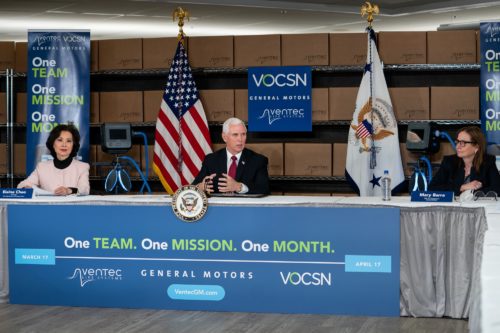
“To be among heroes in the Hoosier state who are saving lives all across America, we are so proud of each and every one of you,” he said.
Pence leads the White House Coronavirus Task Force which meets daily in Washington D.C. to manage the fight at the federal level. This visit was a chance for him to see a big part of the fight in person that’s taking place in his home state.
The visit included a tour of the plant, an explanation of how the life-saving ventilators are made, and a chance to talk one on one with some of the workers putting the machines together.
“It’s an honor to be a part of all this…fighting this virus,” one employee told Pence. “And hopefully these ventilators from Kokomo will get out there and save America.”
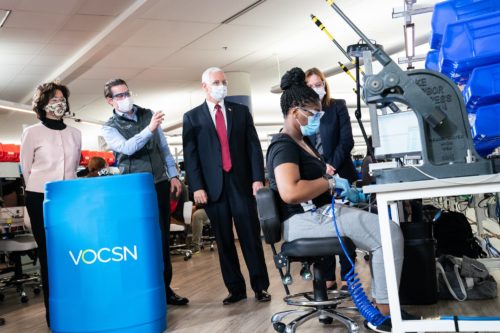
Indiana Democrats called the visit a photo op.
“Hoosiers don’t need a photo op — we need tests, we need protective equipment, and we need leadership,” said Indiana Democratic Party Executive Director Lauren Ganapini. “On every count, this administration has been totally ineffective in responding to this crisis, and Hoosiers are paying the price.”
GM partnered with Ventec and is hiring about 1,000 temporary workers to assemble the ventilators for the federal government.
They’ve already rolled out the first batch ahead of schedule.
“Being among people who put together this plant in 17 days and produced the first ventilator in three days and in less than a month have produced 600 ventilators for the American people, I couldn’t be more inspired,” Pence said.
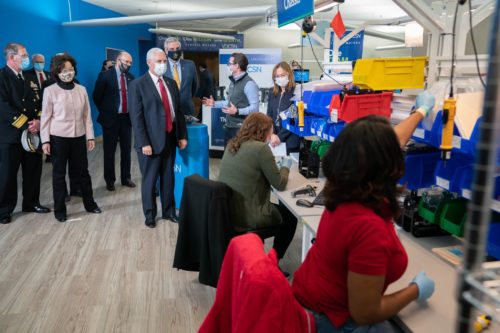
Source: WTHR News, April 30, 2020:
VP Pence tours Kokomo’s GM plant, thanks workers assembling ventilators
Happy Easter from all at Oxigraf!

Today is World Health Day, and we want to say to every healthcare worker in the medical field who helps keep us healthy:
Thank you for everything you do, you are loved and appreciated!
© 2024 Oxigraf, Inc. All Rights Reserved | Site Created by Thomas Marketing Serivces Powered by Navigator Platform